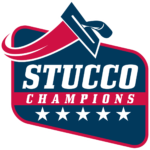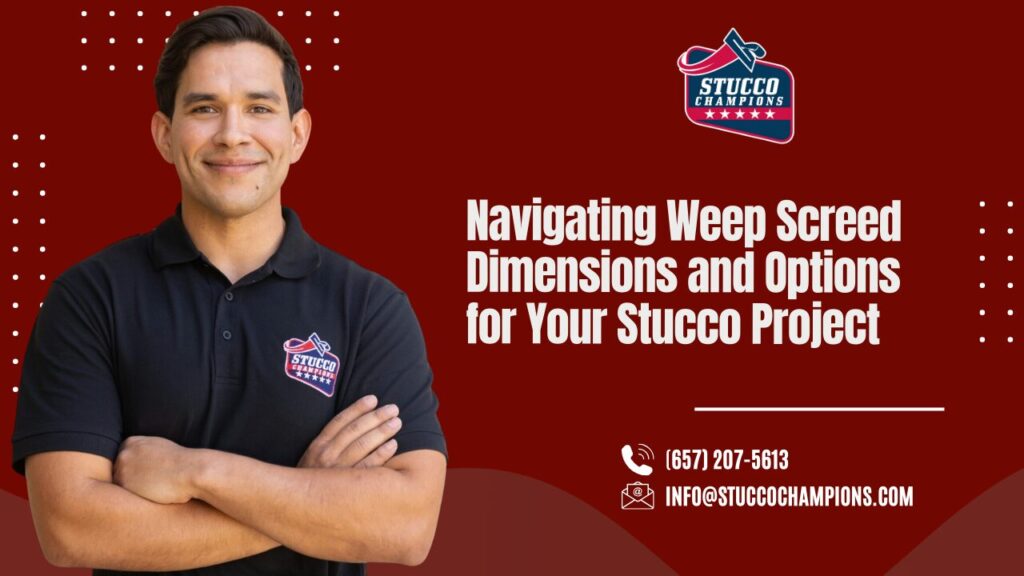In the world of modern and historical home construction, a critical component often overlooked is the weep screed, especially in older homes. This article delves into the function of weep screeds, the potential risks of their absence, and the options homeowners have.
The Function of Weep Screed
A weep screed is a metal flashing with small holes, positioned at the bottom of exterior stucco walls. Its primary functions are:
- Moisture Management: It allows moisture absorbed by the stucco to escape, reducing the risk of water intrusion.
- Application Guide: It provides a depth gauge for the base and finish coats of the stucco.
- Additional Protection: Serving as flashing, it protects wood surfaces like framing and sheathing from moisture.
The Risks of Absence
Lacking a weep screed can lead to several issues:
- Water Intrusion: Without it, moisture cannot escape efficiently, leading to prolonged dampness and potential damage.
- Material Integrity: Stucco’s porous nature means it can absorb and retain moisture, especially if in direct contact with ground moisture. This can result in upward moisture travel, affecting wooden structures.
- Structural Compromises: In the absence of a weep screed, the junction of dissimilar materials (wood framing and concrete foundation) can be prone to cracking, further inviting moisture and potential damage.
According to building codes, such as the International Building Code (IBC), installation of it in certain climates and structures is mandatory. Neglecting these standards can lead to severe structural issues over time.
Long-term Consequences and DIY Risks
Leaving a stucco wall without a weep screed unaddressed can result in long-term damage like rot, mold growth, and structural weakening. DIY installation of weep screed is risky due to potential improper placement, which can void warranties or lead to ineffective moisture management.
Transparency and Recommendations
As a professional in the building industry, I emphasize that DIY weep screed installation should only be undertaken by those with adequate expertise. In most cases, consulting a qualified professional is advisable.
Technical Terms Explained
- Water Resistive Barrier: A layer that prevents water from penetrating the building envelope.
- Single Ply Paper: A type of water resistive barrier used in older homes, known for being less effective than modern alternatives.
- Control Joint: A feature in stucco walls that controls the location of cracking due to movement.
Cost Considerations
The cost of installing a weep screed varies based on the size of the home and the complexity of the foundation. However, the expense is often justified when compared to the high costs of repairing long-term moisture damage.
Alternatives and Professional Guidance
There are moisture mitigation strategies other than weep screed installation,
like improving drainage around the house or applying waterproof coatings. However, these are often temporary solutions. The best course of action is to consult a qualified stucco inspector or contractor. They can provide a detailed assessment and recommend appropriate solutions.
Additional Observations
- Diverse Factors Consideration: While this article discusses general scenarios, each home may present unique challenges. A professional assessment is crucial for precise risk evaluation.
- Hidden Moisture Damage: Homes without weep screed may harbor unseen moisture damage. Professional inspection methods, such as moisture meters or thermal imaging, can reveal such issues.
- Visual Aids: Diagrams showing correct weep screed installation and the effects of moisture on stucco walls can aid understanding.
Conclusion
In summary, while many homes, especially older ones, may lack a weep screed, understanding its importance is crucial. The absence of a weep screed can lead to significant moisture-related issues, potentially resulting in costly repairs. Homeowners should consider the risks, consult professionals, and evaluate the best course of action based on their specific circumstances. Remember, informed decisions are the key to maintaining the structural integrity and longevity of your home.
Last week, we shared Navigating Vertical Weep Screed Installations: Best Practices and Considerations, providing expert guidance on ensuring proper installation for effective moisture management. If you’re planning a vertical weep screed project, be sure to check out this detailed guide for expert insights!




